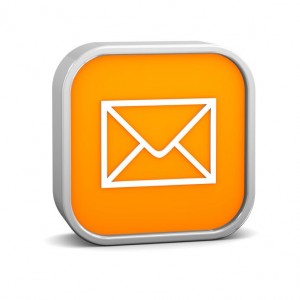“Email, instant messaging, and cell phones give us fabulous communication ability, but because we live and work in our own little worlds, that communication is totally disorganized.”
Marilyn vos Savant
Many people react to email rather being pro-active about how they use it. For example, checking your mail too frequently or responding instantly to visual or sound signals that let you know “You have mail” can be very distracting and lower your productivity. Of course, it may be equally risky not to check your mail often enough. One thing is sure, without a system in place, your mailboxes will soon be overflowing. There is not a one-size-fits-all strategy but our five tips below are designed to inspire you. Adapt them to fit your working style and the environment in which you operate. The end result will be that you control your email, rather than your email controlling you.
1. Have a routine: carve out some time each day to manage your mailboxes and stick to it. For example, set aside some time to pro-actively deal with mails rather than dealing with individual mails as they arrive.
Tip: we tend to be less creative in the mornings and evenings – these can be good times to deal with mail.
2. Set expectations: in some situations, an urgent reply to an email may be necessary but you can also explain your general policy of checking at certain times to all your contacts and colleagues. Ask them to call you or send a text message if the matter is really urgent.
Tip: if you are worried people will become impatient, reply briefly to confirm receipt and say when you will respond.
3. Have a system: set up a simple filing system with general categories such as “Action”, “Pending” or “To Read”, or have folders named after current projects or clients. Get into the habit of filing each mail appropriately after you have read it – this will make finding things much easier.
Tip: once you are used to managing your mail effectively in this way, your inbox can be used as an informal “to-do list” – anything still in the inbox requires your attention.
4. Use rules and delete old mails regularly: detect junk mails and circulars using the rules of your mail system and have this kind of mail automatically deleted or moved to a separate folder.
Tip: your “Sent” messages folder can also be kept lean by choosing a setting that deletes sent messages automatically after a certain time.
5. Apply the 90 second threshold: if it will take you longer to read and file a mail than it will to reply, then it is probably faster and easier to deal with it immediately even if it is not a high priority.
Tip: look quickly at your mails to first to see if you are the main recipient or if you are copied on an “FYI” basis – if copied, it is much less likely that any action from you is required.
If you want to develop your Skills For Personal Business Success, why not work with one of our expert coaches?

